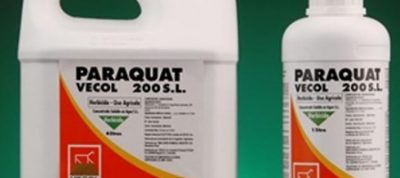Does Weed-killing Chemical “Paraquat” Cause Parkinson’s Disease? Multiple Law Suits in the U.S.

All Global Research articles can be read in 27 languages by activating the “Translate Website” drop down menu on the top banner of our home page (Desktop version).
***
Multiple lawsuits are pending in the United States alleging the weedkilling chemical paraquat causes Parkinson’s disease, and the first case to go to trial over the allegations against Syngenta over paraquat and Parkinson’s was originally scheduled for April 12 but was rescheduled for May 10 in St. Clair County Circuit Court in Illinois. The trial is expected to be delayed due to precautions related to the Covid-19 virus.
That Illinois case – Hoffman V. Syngenta – is one of several pending against Syngenta alleging the company’s paraquat products cause Parkinson’s Disease. The Hoffman case also names Chevron Phillips Chemical Co. and Growmark Inc. as defendants. Chevron distributed and sold Gramoxone paraquat product in the United States in an agreement with a Syngenta predecessor called Imperial Chemical Industries (ICI), which introduced paraquat-based Gramoxone in 1962. Under a license agreement, Chevron had the right to to manufacture, use, and sell paraquat formulations in the U.S.
Lawyers around the United States are advertising for plaintiffs, seeking to draw in thousands of people who’ve been exposed to paraquat and now suffer from Parkinson’s.
One of the most recently filed cases was brought in federal court. That lawsuit is Durbin V. Syngenta.
Several scientific studies have linked paraquat to Parkinson’s, including a large study of U.S. farmers jointly overseen by multiple U.S. government agencies. Farmers use paraquat in the production of many crops, including corn, soy and cotton.
Parkinson’s is an incurable progressive nervous system disorder that limits a person’s ability to control movement, causing tremors, loss of balance and eventually often leaving victims bedridden and/or bound to a wheelchair. The disease is not necessarily fatal but typically becomes severely debilitating.
Dutch neurologist Bastiaan Bloem, who recently authored a book about Parkinson’s, blames widespread exposure to herbicides such as paraquat, along with other toxic chemicals used in agriculture and manufacturing, for the spread of the disease.
Acutely Toxic
Along with fears about links between paraquat and Parkinson’s, paraquat is also known to be an extremely acutely toxic chemical that can quickly kill people who ingest very small amounts. In Europe, the sale of paraquat has been banned since 2007, but in the United States the pesticide is sold as a “Restricted Use Pesticide” due to “acute toxicity.”
As part of discovery in the Parkinson’s litigation, lawyers have obtained internal records from Syngenta and its predecessor corporate entities dating back to the 1960s. Many of these documents are sealed, but some have started to come to light.
Those unsealed discovery documents, which include copies of letters, minutes of meetings, study summaries, and emails, are being made available on this page.
Most of the documents unsealed to date deal with corporate discussions about how to keep paraquat herbicides on the market despite its deadliness, through measures designed to reduce accidental poisonings. Specifically, many of the documents detail an internal corporate struggle over the addition of an emetic, a vomit-inducing agent, to paraquat products. Today, all Syngenta paraquat-containing products include an emetic called “PP796.” Liquid paraquat-containing formulations from Syngenta also include a stenching agent to produce a foul odor, and a blue dye to differentiate the dark-colored herbicide from tea or cola or other beverages.
EPA Review
Paraquat is currently undergoing the EPA’s registration review process, and on Oct. 23, 2020, the agency released a proposed interim decision (PID) for paraquat, which proposes mitigation measures to reduce human health and ecological risks identified in the agency’s 2019 draft human health and ecological risk assessments.
The EPA said that through collaboration with the National Toxicology Program at the National Institute of Environmental Health Sciences, the agency completed a “thorough review” of the scientific information on paraquat and Parkinson’s Disease and concluded that the weight of evidence was insufficient to link paraquat to Parkinson’s disease. The agency published this “Systematic Review of the Literature to Evaluate the Relationship between Paraquat Dichloride Exposure and Parkinson’s Disease.”
USRTK will add documents to this page as they become unsealed.
*
Note to readers: please click the share buttons above or below. Forward this article to your email lists. Crosspost on your blog site, internet forums. etc.

